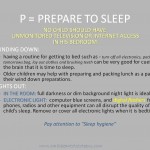New research shows black American children at HIGHEST risk of being overweight
In particular, children and teens who currently have higher obesity rates would require larger energy gap reductions [more dietary restriction and more exercise] to reach the obesity rate goal. For instance, based on their current obesity rates, white youths would need a 46-calorie reduction, on average, in their energy gap to reach the goals. But given their higher obesity rates in 2008-2010, the average reduction needed to close the energy gap for Mexican-American youths is 91 calories and, for black youths, it is 138 calories. Youths in lower-income communities also need greater reductions than their peers in higher-income areas, again due to higher rates of obesity. Additionally, an earlier study by several of the same researchers found that the problem is especially acute for teens who are already overweight.
The solutions are the same: it take time more than money, to make lifestyle changes.
Learn MoreThe authors outline several policy strategies that could help to close the daily energy gap for American youths. For instance, they point to research showing that:
- replacing all sugar-sweetened beverages in school with water and not consuming any additional sugary beverages outside of school could reduce the energy gap by 12 calories per day;
- participating in a comprehensive physical education program could eliminate 19 calories per day among children ages 9-11; and
- engaging in an after-school activity program for children in grades K-5 results in an additional 25 calories expended per day.
Time to Unplug the TV!
One study found that children who spent more than eight hours watching TV each week at age 3 were more likely to be obese at age 7. Having a TV in their bedroom ups their chances of being overweight even more, says Amy Jamieson-Petonic, RD, spokesperson for the Academy of Nutrition and Dietetics
These guidelines will help your family maintain just the right amount of screen time.
- Limit TV and other media to less than two hours per day for kids age 2 and older. Do not allow television viewing for children less than 2 years of age, according to recommendations by the American Academy of Pediatrics.
- Keep TV out of the bedrooms.
- With the exception of an occasional family movie and pizza night, keep television sets off while eating.
- Sit down with your kids to help them select the specific TV shows they’ll watch, giving them some control and helping them make decisions. Watch with them when you can.
Active Video Games Don’t Mean Exercise
Active Video Games Don’t Mean Kids Exercise More.
A study conducted by Dr. Tom Baranowski and his colleagues shows disappointing results from active video game use. Reported on February 27, 2012 in the American Academy of Paediatrics Journal:
…kids who were given so-called active video games to play on a Nintendo Wii didn’t end up logging any more moderate or vigorous physical activity than those given games they could play sitting on the couch.
“We expected that playing the video games would in fact lead to a substantial increase in physical activity in the children,” Dr. Baranowski told Reuters Health. “Frankly we were shocked by the complete lack of difference.”
So, its still up to parents to implement some real time for play and excercise.
The American Academy of Paediatrics also recommends limiting electronic screen time in all age groups.
Learn More












